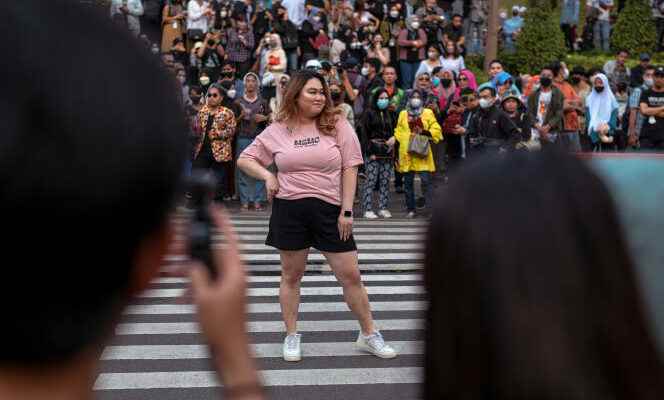LETTER FROM JAKARTA
A flight of steps leading up to a pedestrian alley, zigzagging under the trees: in Jakarta, this confetti of greenery around the Dukuh Atas terminus, in the center of the Indonesian capital’s business district, is the rallying point for young people suburbs. She hurries there on weekend evenings, to cross the pedestrian crossing of a little-frequented alley way “catwalk” (“fashion show”), as the models do, to the applause of the crowd, and above all, in front of the lenses of cell phones.
Around, the illuminated office towers of major banks, the facades of international hotels and the window of a Starbucks complete this replica of the American dream in the making in this congested capital of 10 million inhabitants – three times more if you count the satellite cities – of which Dukuh Atas is the first railway hub worthy of the name: the metro line that connects to it, the first and only in Jakarta at this stage, only opened in 2019.
Appearing at the time of the lifting of the restrictions linked to Covid-19, in the spring, when the penniless young people decided to take the air for the price of a train ticket in the beautiful districts, the phenomenon quickly became the sensation of the moment in the media and on social networks, under the name of “Citayam Fashion Week”, or the “Citayam youth fashion week” – a nod to the fashion weeks of the major European capitals.
Because Citayam is one of the stations about thirty kilometers from the center where the urban sprawl around the railway line and along the canals quickly takes on the appearance of a slum. On TikTok and Youtube, the most popular videos show teenagers, alone or in groups, showing off their outfits with the jerky gait of models and their gaze fixed straight ahead, while a crowd moves aside in their path.
According to Yayat Supriatna, an expert in urban issues from Trisakti University quoted by the Jakarta Postthe phenomenon has enabled young people from outlying neighborhoods to “to assert oneself in a place that symbolizes power and the quest for a social position : they take a certain pride in being seen as people who matter in the heart of the capital he says.
“If we have enough views on TikTok, we get paid”
The presence for several months of law enforcement officers from the city now prevents mass gatherings on the public highway. And big red plastic blocks get in the way. But at the end of October, the young people of Citayam were still there, parading on the sidewalks, drinking tapioca iced teas in small groups and taking pictures of themselves.
You have 57.94% of this article left to read. The following is for subscribers only.
